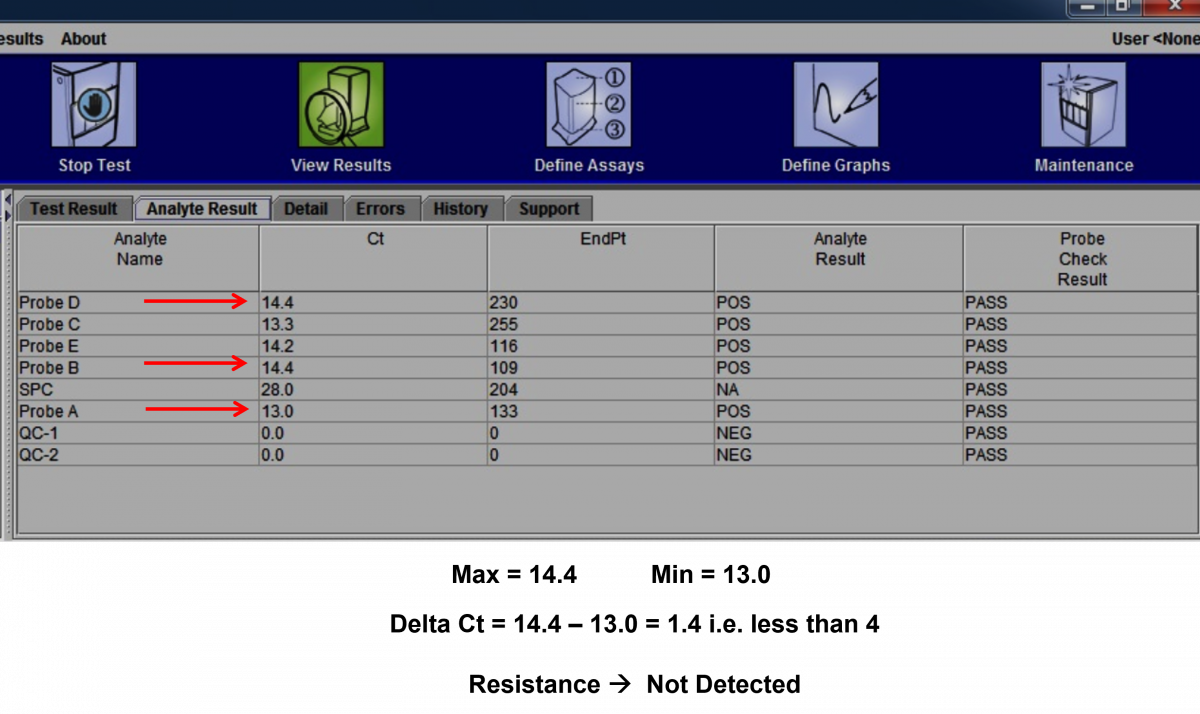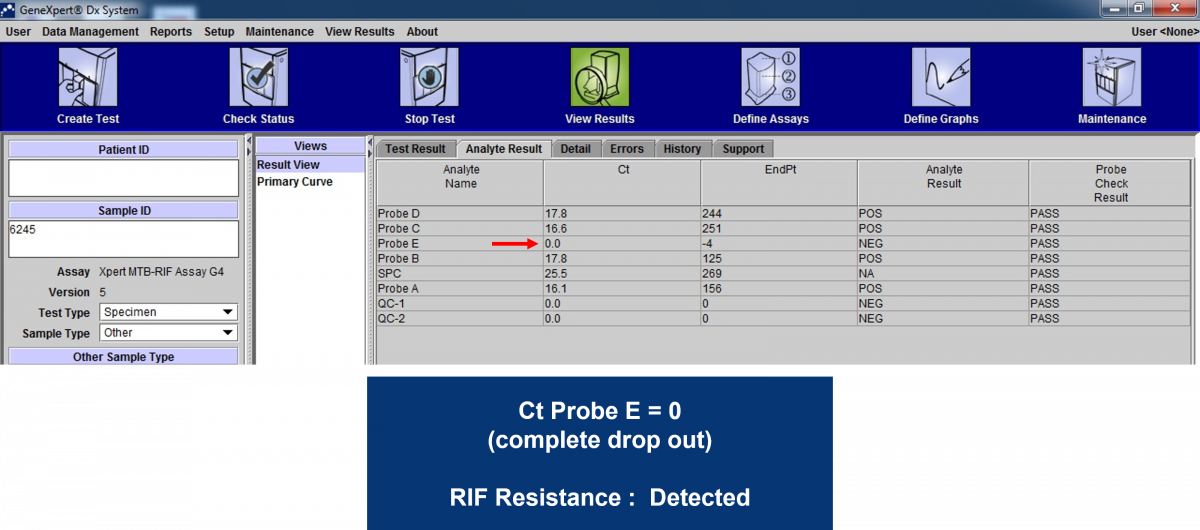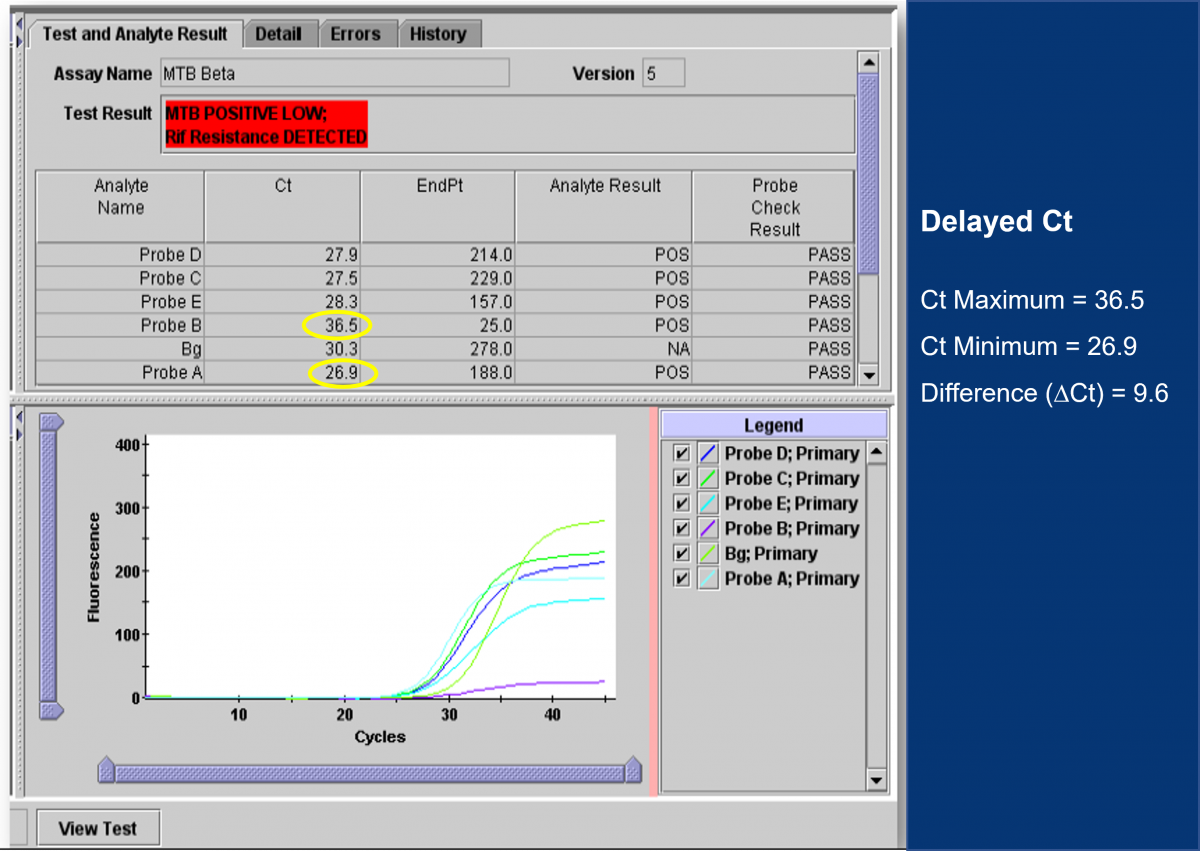Content Status
Type
Linked Node
Detection of MTB and RIF Resistance Results Interpretation in CBNAAT
Learning ObjectivesLearn about Detection of MTB and RIF Resistance Results Interpretation in CBNAAT
In Cartridge-based Nucleic Acid Amplification Test (CBNAAT) assay, the basis for detection of rifampicin resistance is the difference between the first or early Cycle threshold (Ct) and the last or late Ct value, of M. tuberculosis-specific probes. Or the difference between probes with the maximum Ct value and minimum Ct value is greater than four.
Rifampicin resistance not detected, will be declared in an MTB positive specimen when all the five probes are detected and the difference between probes with the maximum Ct value and minimum Ct value is less than four.


Figure 1: Results interpretation for detection of RIF resistance
Complete Dropout and Delayed Ct
The molecular beacons are designed to hybridize with amplified wild-type, i.e., rifampicin sensitive, rpoB sequence.
A mutation within this sequence will interfere with hybridization in such a way that the conformation of the probe, i.e., the molecular beacon may remain in the non-fluorescing state. Thus, a mutation anywhere in the core region of the rpoB gene will result in either:
- Dropout: Complete suppression of fluorescence of the corresponding molecular beacon, resulting in a zero Ct value
- Delayed Ct value: Due to partial suppression
Figures 2, 3 and 4 show these scenarios.


Figure 2: All MTB specific probes have CT values in a detectable range. The difference between the maximum and minimum CT values is < 4, therefore, the test is declared as RIF Resistance: Not Detected.

Figure 3: Probe E is a complete drop out showing a 0 Ct value, therefore, the result is declared as RIF Resistance detected.


Figure 4: Delayed Ct value for probe B. As the difference between maximum and minimum CT value is > 4, therefore, the result is declared as RIF resistance detected.
Resources
- World Health Organization Manual on Xpert MTB/RIF Implementation, 2014.
- Laboratory Diagnosis of TB by Sputum Microscopy – Handbook, GLI Initiative.
Kindly provide your valuable feedback on the page to the link provided HERE
Content Creator
Reviewer
Target Audience
- Log in to post comments
Comments
Slide 1 crowded. Figures 2 &…
Dr. Priyadarshini Tue, 02/01/2024 - 15:54
Slide 1 crowded. Figures 2 & 3 could be better images